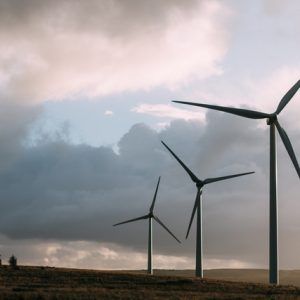In spite of enormous hydrocarbon potential, Tanzania is planning to plug more than 6,000 megawatts of renewable power - more than its current total power capacity - into its national grid, as president Samia Suluhu Hassan mounts rapid economic reforms to woo investors to the East African state.
Seth Onyango, bird story agency
On April 29, Tanzania announced it had inked an agreement with exploration firm Equinor and with Exxon Mobil to develop a vast liquefied natural gas (LNG) plant worth 30 billion US dollars (USD).
Tanzania has an estimated 57 trillion cubic feet of gas reserves but disagreements with oil corporations over production-sharing had stalled investments in the sector. However, President Samia Suluhu Hassan renewed negotiations with energy firms to revive the construction of offshore natural gas projects in 2023.
But while the East African nation looks to prop up its gas industry, its renewable energy sector is set to record its biggest growth in decades.
Its 2,100MW Julius Nyerere Hydropower Project (JNHPP) is inching closer to completion, with the Ruhudji and Rumakali hydropower projects also lined up to begin producing 358MW and 222MW respectively.
The developments will be a significant boost for Tanzania which as of 2021 had a total electricity supply of just over 1605 MW.
During a recent US trip, Hassan targetted up to 700MW of electricity from solar, according to Energy News Africa, with Tanzania also looking to move quickly into wind energy.
“Tanzania currently produces electricity from natural gas and also plans to tap energy from wind. There are also studies being undertaken to generate electricity from geothermal sources,” she said.
With her ambitious 6000MW green energy generation roadmap, if successful, Hassan will make Tanzania one of Africa’s top renewable power-generating states, after South Africa and Morocco.
According to ESI Africa ranking, as of May 2021, South Africa had a total of 58,095MW electricity installed capacity out of which 6,065 MW was clean energy.
Morocco plans to have 8,000 MW of installed renewable energy by 2030. Its Ministry of Energy Transition and Sustainable Development estimated it had 4,300 MW of installed renewable energy in 2021, according to GlobalData.
The efficiencies and speed of installing renewable power - particularly solar and wind - offer an increasingly attractive way forward.
With a 6,000 MW target, Tanzania will also have the largest installed power capacity in East and Central Africa, ahead of states likes Kenya and Ethiopia, depending on how quickly it moves.
President Hassan is also accelerating a rural electrification program. Previously, Tanzania had planned to expand production installed capacity to 4,700 MW by 2025 and 7,400 MW by 2035 and to provide electricity to at least 75 per cent of the population by 2033. It was not clear what the new timelines would be.
President Hassan's gameplan
In her trip to the US three weeks ago, President Hassan bagged 1 billion US dollars worth of investment deals from various American firms, most of which towards the energy sector.
Her continued trips both in Africa and overseas highlight a significant makeover in Dodoma’s diplomatic posturing that pundits posit as assuaging investor fears.
A series of policies by Hassan’s predecessor John Magufuli spooked foreign companies, mostly those operating in the mining sector.
But Hassan - who made history as Tanzania’s and East Africa’s first female president - appears keen to open up her country for investment.
“Tanzania is ready to take off. We are open to anyone in the world willing to invest with us and are embracing the private sector. I believe the private sector can cause growth within the country,” she stated during her US trip.
“Economic growth is about working closely with the private sector since it has a significant role in attracting FDI’s (Foreign Direct Investments),” she said.
bird story agency





